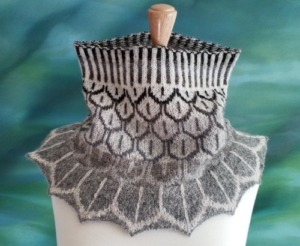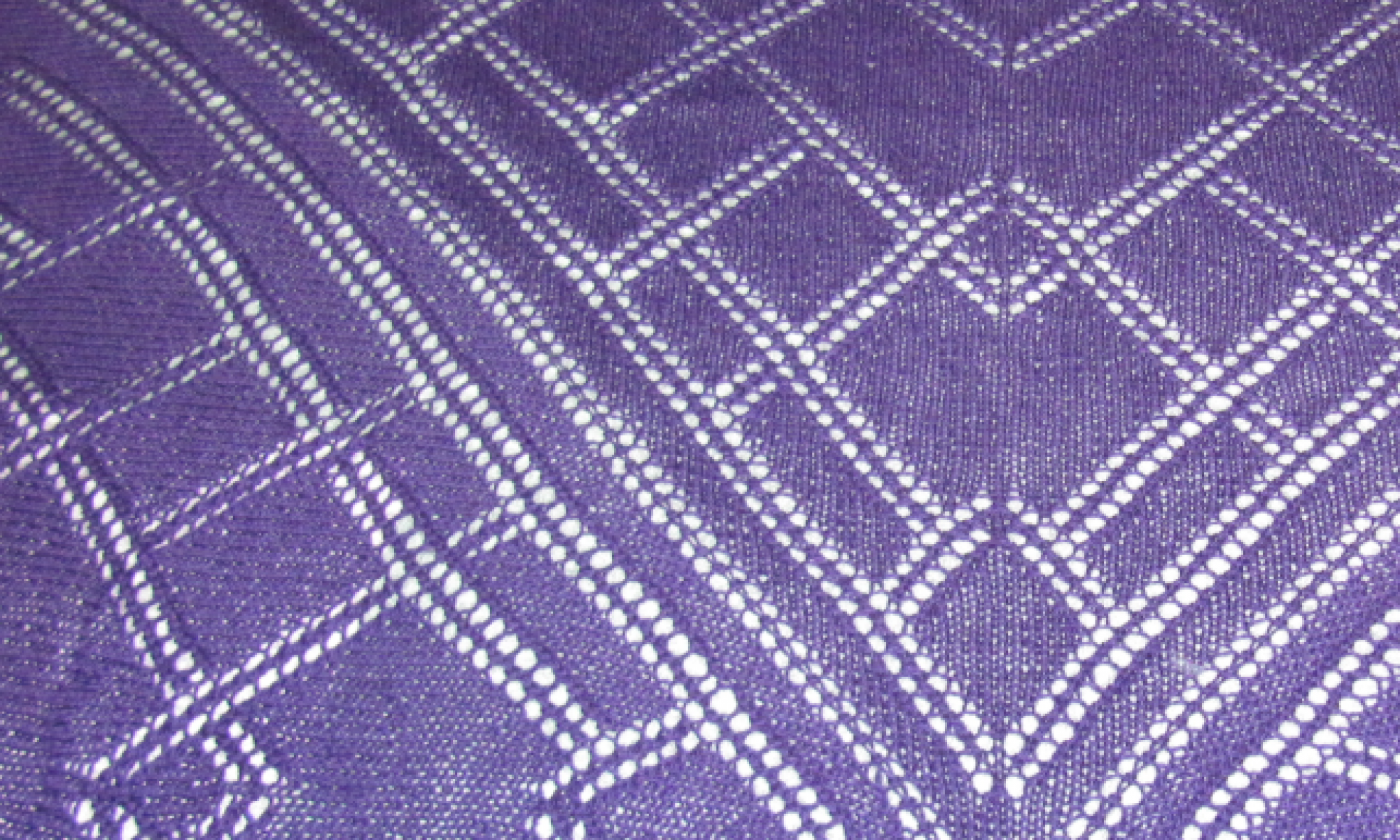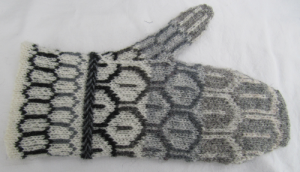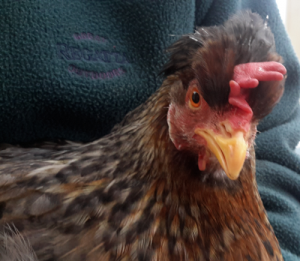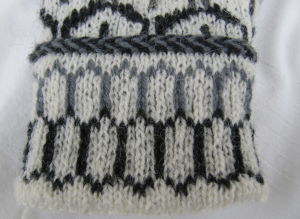There are, of course, several ways to knit a mitten, and I have tried most of them. My favourite technique, at the moment, is to knit the thumb first, place it on waste yarn, and then begin the mitten at the fingertip end, knitting down the hand until you reach the point when you incorporate the thumb. You can try the mitten on at every stage, to get the most comfortable width for you and the best length before you add in the thumb. It also has the advantage that the technique for casting on for full mittens is identical to that for toe-up socks, so if you are a sock knitter, the method is entirely familiar.

This technique is used in several of my mitten patterns: Fingerless Feather Mittens, Full Feather Mittens, and my free pattern for sock yarn mittens; this photo tutorial is an aid to those patterns. The thumb is incorporated into the mitten and a gusset is then knit to taper the mitten.
Thumb
First, knit your thumb, according to the pattern you are using. This can be a half-thumb (for fingerless mittens) or a full thumb. 
Thread the first 2 stitches and the last 2 stitches of the round onto a small piece of waste yarn, and thread the remaining stitches of the thumb onto a longer piece of waste yarn.
Mitten
Work the first part of the mitten, from fingertip/fingerless mitt ribbing, to the point where the thumb joins the palm. The mittens are identical for the purposes of attaching the thumbs. Ensure you have worked the mitten to 2 stitches before the end of the round where you will attach the thumb. Using a piece of waste yarn, thread the two stitches from the beginning of the mitten round and the 2 unworked stitches from the end of the round onto the waste yarn, as you did for the thumbs.

Take one of the pre-prepared thumbs and remove the longer piece of waste yarn as you place half the remaining thumb stitches onto one of the mitten needles and the other half onto the other needle; the 4 stitches still on the waste yarn should be sitting adjacent to the mitten stitches also on waste yarn.

Round 1: Knit around the mitten and thumb once, the start of round now being the last mitten stitch of the round, adjacent to the first thumb stitch.
Round 2: ssk the first mitten stitch with the first thumb stitch, knit across the thumb to the last thumb stitch, k2tog the last thumb stitch with the next mitten stitch. Knit around the mitten to the end of round. [2 stitches decreased]
Round 3: knit
Repeat rounds 2 and 3 until all thumb stitches have been decreased.
Knit straight until mitten reaches your wrist bone, then add the cuff of your choice.
Once the gusseted thumb has been incorporated into the mitten, you can close the gap by grafting/Kitchener stitching the 4 stitches of the mitten with the 4 stitches of the thumb. See YouTube video https://www.youtube.com/watch?v=pJFRI-_EQeA for a great tutorial on Kitchener Stitch.

